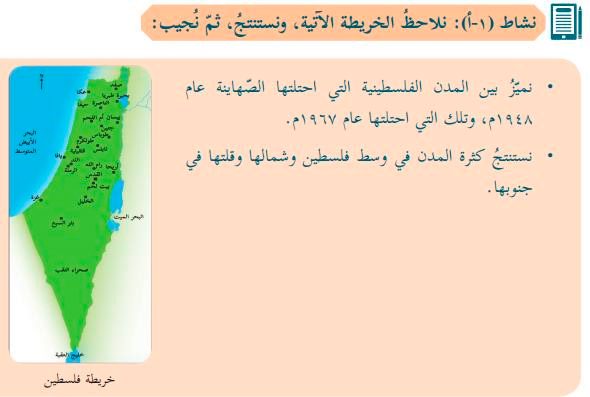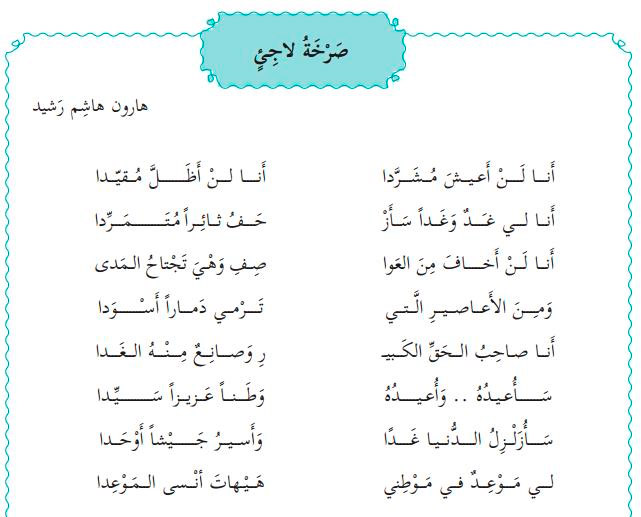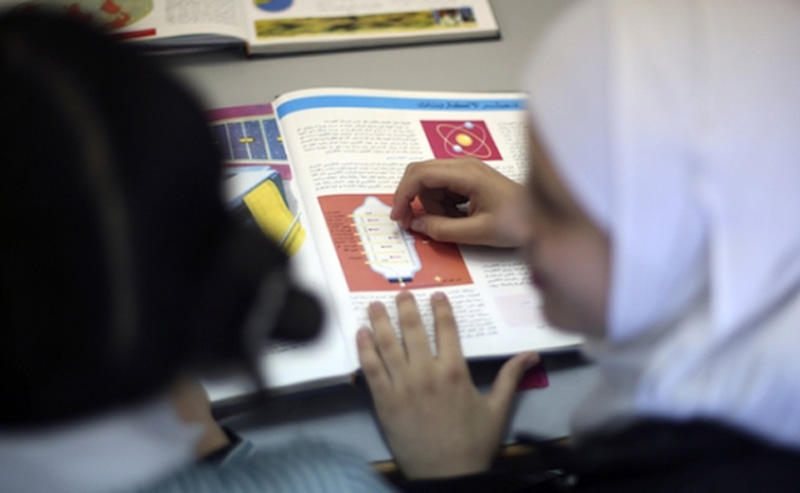UNRWA has always indoctrinated, implicitly though, that the pre-67 territories were part of sovereign Palestine and that they should be liberated as well. The new approach is that this issue is now stressed further by replacing the term “Israeli occupation” with “Zionist occupation”.
Please see the following references taken from the books.
References:
- Zionist occupation of Palestine started in 1948 and was completed in 1967.
- A precondition for solving the Palestinian refugee problem is ending Zionist occupation.
- The Palestinian refugees of 1948 will return to their former homes (in pre-1967 Israeli territory) which will become part of a restored Palestinian sovereign homeland.
1“Activity 1A: Let us look at the map below, conclude and later answer:
[Map of the whole country titled “Map of Palestine” with no modern Jewish cities]
Let us distinguish between the Palestinian cities occupied by the Zionists in 1948 and those ones they occupied in 1967…”

(Social Studies, Grade 7, Part 1 (2017) p. 56)
2 “We have learned:
-It is possible to solve the Palestinian refugee problem by way of ending the Zionist occupation and implementing the UN resolution No. 194 that provides for the return of the refugees to their cities and villages from which they were forced to emigrate and their compensation for their suffering and material and moral loses.”

(Social Studies, Grade 6, Part 1 (2017) p. 38)
3 “A Refugee’s Outcry
[A poem by] Harun Hashem Rashid
I shall not live as a displaced person
I shall not remain chained
I have a morrow, and tomorrow I will
Advance as a revolutionary [or: avenger – tha’ir in Arabic] and rebel
I shall not be afraid of the
Storms when they subdue the expanses
And of the hurricanes that
Hurl black destruction
I am the owner of the great
Right from which I make the morrow
I shall take it back, and restore it
As a precious and sovereign homeland
I shall shake the world tomorrow
And shall go as a singular army
I have an appointment in my homeland
And it is impossible that I forget the appointment”

(Arabic Language, Grade 5, Part 1 (2017) p. 85)









